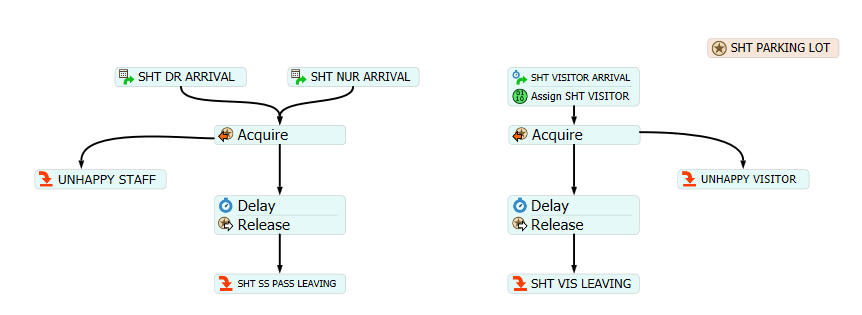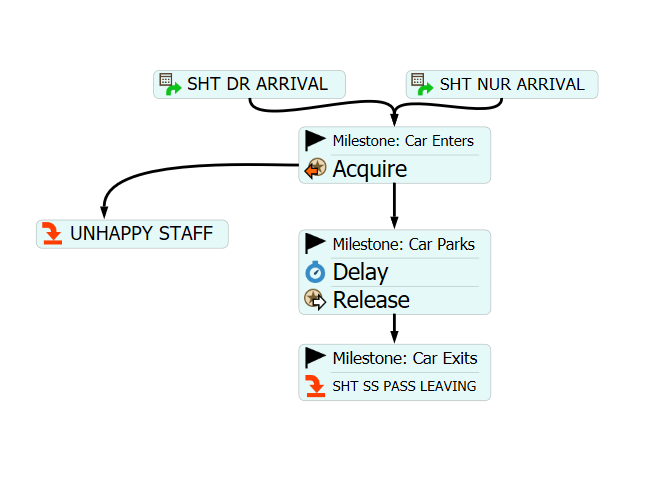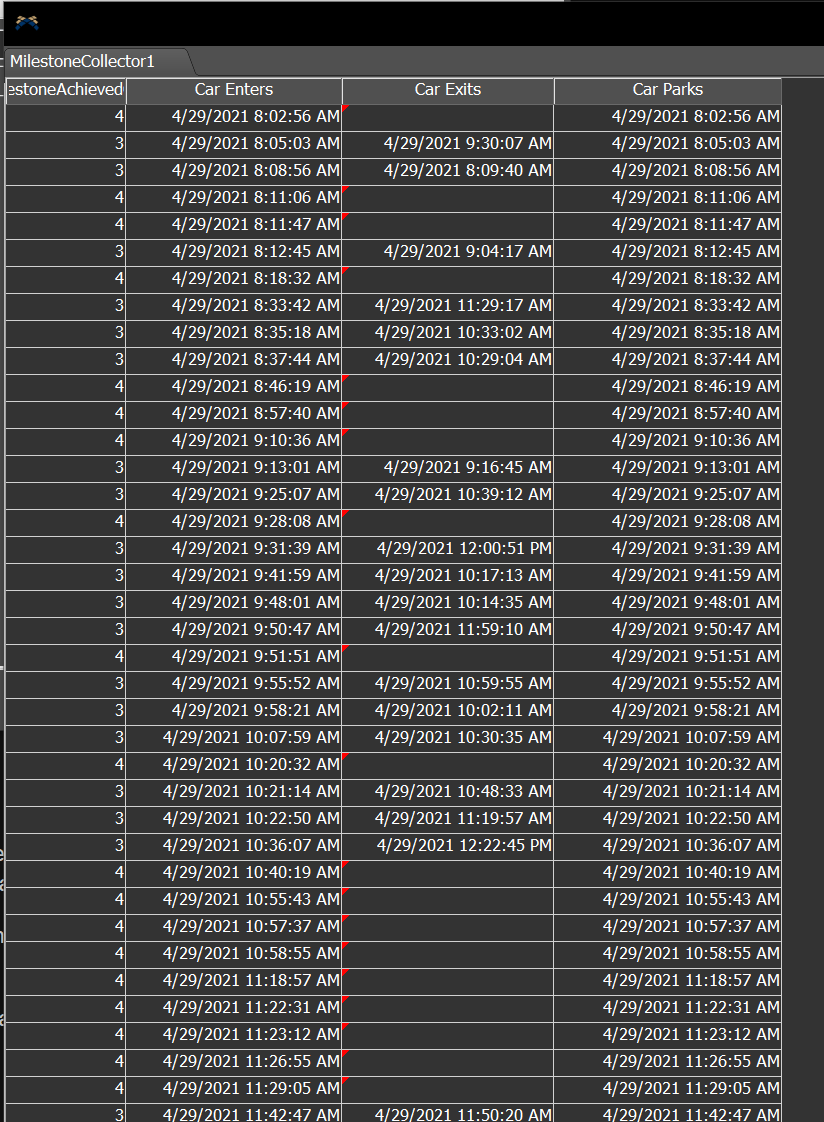Hi
I am new to flexsim modeling and want to ask help in collecting statistics from process model.
I built a simple model to simulate car parking activities in our new building. I have two groups of staff and a group of visitors "completing" limited parking lots in the building. I set max waiting time for each groups, once exceeded, people become "unhappy".
I would like to seek help on the following:
1. In this process flow model, I want to collect statistics including all the timestamps that a car has (e.g. time when created, time when joined queue if no available parking lots, time when obtained a parking lot, time left the car park, etc).
2. I also want to track number of cars in the queue, as well as occupying the resource (e.g. WIP). (I have done up a chart on input vs time, but not sure how to track number of items instead..)
If possible, can you help to create an example of each, with some explanations? Much appreciated!




